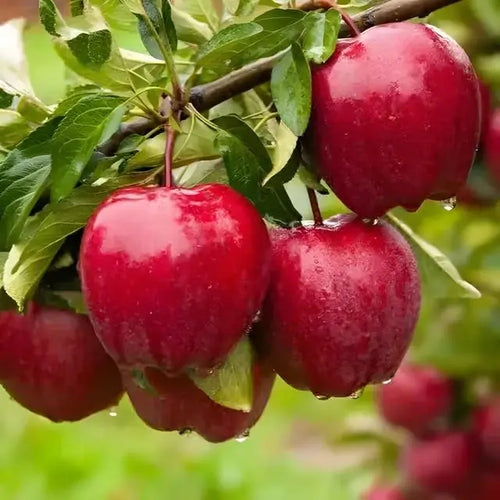Common Apple Tree Diseases You Should Know
There are several diseases, pests, and insects that can affect your apple trees. They can ultimately damage the tree or fruit production if not controlled on time.
It is essential to know about the common diseases and problems that can pose a severe threat to your beloved trees. Early detection and taking preventive measures can save them from dying. Some of the common apple tree diseases are-
Bull's Eye Rot- This disease is caused by fungi and can be identified by brown circular lesions on the fruit. The symptoms are not generally visible at the time of picking and appear during storage. A pre-harvest spray can help in controlling Bull's Eye Rot.
Crown Gall or Root Gall-Crown Gall or Root Gall is caused by bacteria called Agrobacterium tumefaciens. It is a soil-borne disease that affects the roots and plant's crown. The disease can be identified by the growth of galls on the crown and roots. It is advisable not to buy infected cuttings for planting.
Crown Rot- Crown rot is caused by a fungus called Phytophthora, and it leads to the decay of the crown. Some of the other symptoms include discoloration of leaves and delayed bud break. A tree affected with crown rot eventually ends up dying, so it is recommended to plant disease-resistant varieties. Trees that grow in well-drained and rich soil with ample sunlight are healthier and less prone to diseases.
Powdery Mildew- Powdery Mildew can be identified by the presence of a white-grayish powder-like coating on leaves. It is caused by a fungus called Podosphaera leucotricha. Once the disease spreads, it results in wilting of leaves, and they eventually die. Trees can be sprayed with fungicides in early spring so that the tree is not affected.
Fire Blight- Fire Blight is a bacterial disease that causes the browning of leaves and blossoms. The branches and twigs of the tree tend to turn brown and ooze thick brownish liquid. It is advisable to remove the affected twigs, leaves, and branches in the dormant season. Also, make sure that you dispose of the affected leaves and branches away from the area to prevent them from affecting the other trees.
These are some common apple tree diseases that should know to take preventive measures and appropriate action on time. This way, you will be able to save your prized trees from getting damaged.
Source of Information on Common Apple Tree Diseases
https://www.tnnursery.net



















































